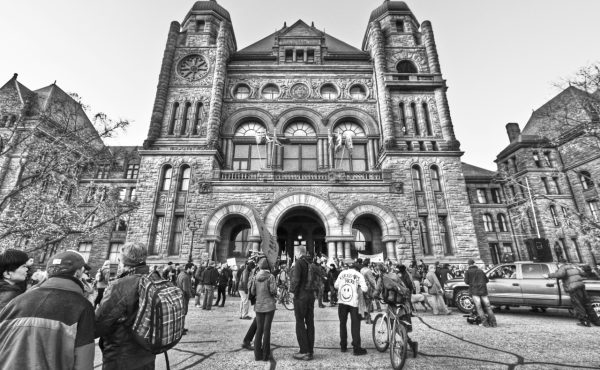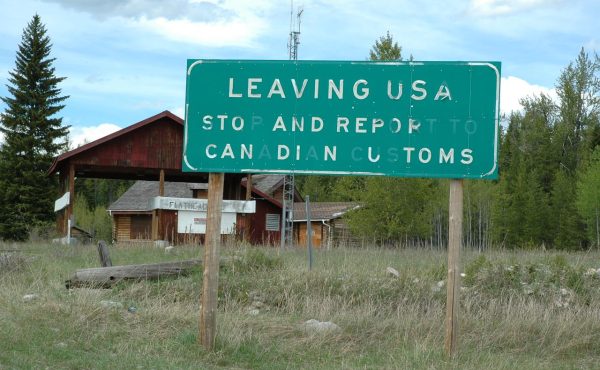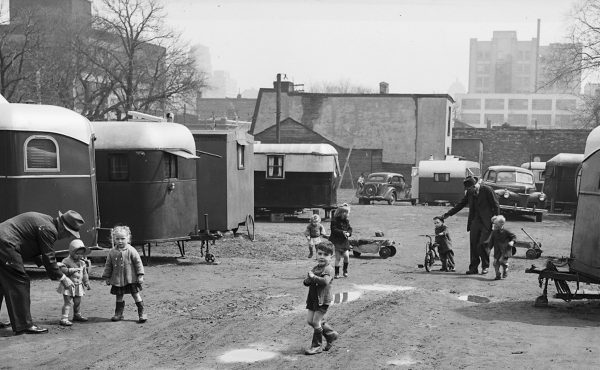
In the universe where I live, politicians seeking to deliver on a campaign promise sell their plan to the public and their colleagues during a process known as a “debate” that typically culminates in a “vote” (a.k.a., “a decision”).
In the universe where the brothers Ford live, the story line appears to run in reverse, with the final decision functioning as a kind of prologue to the campaign.
But hey, the Fords march to their own theme song. They are the un-deciders.
So what to make of the two strands of information – yesterday’s radio launch of the Fords’ permanent revolution and the trial balloons about possible taxes to finance transit – that began streaming out of mayorville last week?
It is tempting to dismiss Councillor Doug Ford’s bluster, as reported by my colleague Marcus Gee, as so much methane. After all, 2014 is a long way off, and the Fords will be in the politically complicated position of defending to voters their failure to deliver a privately-funded subway to Scarborough Town Centre.
At the same time, their approach reminds me of a wonderful scene in “The West Wing,” when President Jed Barlet’s advisors are trying to strategize their way out of a tough spot. One says that what they really need is a widely reviled opponent against whom they can fight the good fight.
“I have the perfect candidate,” exclaims C.J. Cregg, the press secretary. “The U.S. Congress!”
If Mayor Rob Ford, borrowing a page from The West Wing, plans to spend the next 30 months vilifying council as a collection of obstructionist know-nothings, he’ll be on familiar rhetorical terrain, aligning himself with the hard-done little guy who always gets the short end of the urban stick. While I doubt these guys have the stamina to keep it up for more than a few months, the left and the centre would be wise not to underestimate the mayor’s dualist narrative of populist entitlement (suburbs vs. downtown, subways vs. LRTs, cars vs. bikes, etc.).
Indeed, I’d argue that the Fords’ opponents must sell their transit story and do so aggressively — something David Miller failed to do when he delivered the Transit City cash in 2007. Moreover, they shouldn’t fall into the bear trap that is the Fords’ either/or rhetoric. With all due respect to Transit City fans, subways are important, desirable and necessary in big cities. They don’t kill street life and they concentrate development. Indeed, transit experts like Eric Miller, of the University of Toronto’s Cities Centre, understand that what’s needed is a hierarchy of modes that function together as a network. It’s not black and white.
Which brings me to the Ford camp’s unexpected smoke signals about parking levies or sales taxes. Ignore the switchbacks and the weekend poll showing that most people don’t want to pay extra for transit. What’s important about the brothers’ new-found interest in taxation is that it strongly suggests they’ve been warned about the difference between guaranteed and speculative revenue streams.
Allow me to suggest a thought experiment: let’s say the Stintz 25+ fell silent on the subway file while the Fords blundered ahead with a deal to attract private investors. At some point, the city would have to begin shopping a request for expressions of interest (REOI), and then a full-blown request for proposals.
Infrastructure Ontario, in recent years, has created a healthy private sector appetite for alternative financing and procurement projects (Triple-P lite). While investors know that such deals involve the transfer of risk, they also can expect to earn a profit (e.g., via a long-term design-build-finance-maintain deal) if they meet specified performance targets. IO claims it has completed $23 billion in such deals.
That, in other words, is the state of the market, like it or not. The Fords’ subway plan – i.e., the movie version of Gordon Chong’s report – likely relies on a private partner to deliver the project and financing up front in hopes that the revenue – from charges related to development along the corridor – will materialize at some point in the mid-to-long-term future.
The crucial difference, of course, is there’s no guarantee the development will happen; in fact, there’s an upper limit on the city’s ability to attract investment through zoning changes and mechanisms like tax-increment financing. So even if the private partner did a bang-up job and built the subway in record time and on budget, the investors don’t actually know when they’ll get their money out. In other words, the risk-reward balance is dramatically out of whack.
Now imagine you run an investment fund that looks for infrastructure deals, and your choices are the subway or the sort of project IO offers. Easy decision, right?
My hypothesis is the Fords have been told by someone in a position to know that if they put a version of Chong’s subway plan out on the street, it’s unlikely to get any serious attention because no investor group with sufficiently deep pockets has that kind of risk tolerance.
Indeed, the Fords’ nightmare scenario is a subway RFP, floated during this term of council, that attracts either no interest or just a single bid. Ergo their new-found interest in guaranteed, as opposed to theoretical, revenue streams. It’s all about sweetening the pot.
I’m actually glad they’re joining the real world. But the Alice-in-Wonderland element here is that there’s a good chance Queen’s Park will sign off on the Stintz compromise of February 8, including a Sheppard LRT. So the Fords are shilling for subway-related levies even as Metrolinx is gearing up to negotiate a contract with the city to build surface transit on the very corridors where they want to build subways (Sheppard and now Finch).
Confused?
Don’t be: the Stintz 25+ can simply appropriate the Fords’ subway levy trial balloons as the starting point for a long-overdue debate about financing the downtown relief line.
Notice of motion, anyone?
photo by Danielle Scott





11 comments
Unfortunately, the idea of using Ford’s P3’s/whatever for financing the downtown relief line will simply drive yet another wedge into the whole “why do downtowners get all the subways” debate, and widen the gap even further. The answer isn’t something that can be explained in a simple catchphrase, so you’re basically leaving the door wide open for either Ford himself or someone else to run again.
A lot of people seemed to agree that Stintz’s original plan – to use some of the money saved on Eglinton (and the available federal funds) to extend the Sheppard subway to Victoria Park – made sense, since part of that has to be tunneled anyway and so the cost isn’t much different. I’d say use some of the $650 million the province agreed to assign to Sheppard if there was money left over from Eglinton, plus federal funds, for that, and tell the Fords they have the rest of their mandate to scare up financing for the rest of their subway. If they can’t do that, it’ll be clear to everyone that the LRT is the only viable option.
It will also show up the Ford “subways” rhetoric, since council will have been the one who built what subway could be built.
Dylan – I suspect that is why there was no opposition amongst the Stintz 25 to the Sheppard panel. The left realizes that the connection to Don Mills was the most problematic part of the LRT proposal; was it even ever resolved?
There would have been tunneling anyway, and there would also have been construction issues to retrofit the platform at Don Mills (i.e. would that offset the cost to extend it to VP and do the connection the right way from the outset?).
A Sheppard Subway will become the “gravy train” for Rob Ford and his followers. If it is built, the operating subsidizes will be high. Unless the TTC gets increased operating subsidizes from the city, province, AND federal governments, which other jurisdictions in the world get to operate their underground electric railways (if there is no other revenue coming in from real estate holdings like in some Asian cities), we can expect losses in operating the line without ignoring the NIMBY’s and history the TTC has experienced with its current suburban stations.
Ford wants the TTC to be financially efficient. How can it be if it has to operate Rob’s “gravy train”, while ignoring a more financially efficient transport option of light rail?
Implementing politically toxic taxes and fees is going to eat up a lot of political capital. So the critical question for progressives to pose (and have the answer ready) is not just “can the money be raised for a subway”, but “if we are to raise this boatload of money for transit improvements, what’s the best way to spend it”?
A lot of folks were crowing that Chong’s report showed the Mayor didn’t have a plan to fund the subway, but this is the wrong approach to take — Ford could come back with a proposal to say that measures a, b, and c would fund a Sheppard subway and make it financially achievable. Depending on the funding tools he advocates, it could make him look reasonable or make it appear as though he’s “reaching across the aisle” (e.g., fees on auto use or parking). Instead, we should be proactive and frame the debate not in terms of whether we can raise $4B for Sheppard, but what transit improvements we could put in place for that same $4B.
If the “expert panel” makes the decision to not extend the subway to Scarborough Town but take it a further 2 stops to Victoria Park then the decision to extend LRT is moot because there won’t be any money left. If they decide it will be LRT from Don Mills to the Zoo which is a scenario that Councillor Stintz charged them with discussing they will still have the tunneling required to get to the other side of the Don Valley and the conversion of the Don Mills station to accomodate two different modes of Transit. As a result they will probably run out of money at Victoria Park. So what will happen from Victoria Park east on Sheppard? Therein lies the rub; the Sheppard Subway extension isn’t the only unfunded “plan” being presented. Just my thoughts.
Tempting politically to call Ford’s bluff and watch as unforeseen bills, taxes, user fees & sweetheart deals eventually come to light. The Province & council already waited a year for Ford to perform his alchemy but he said no to all stable funding sources until the Sheppard LRT appeared back on the table.
Associated with high subway construction costs are higher operation & maintenance costs. Whether it’s the subway to ‘Vaughan Metro Centre’ (Walmart) or the Downsview & Scarborough Ctr extensions, they add substantial ongoing costs without commensurate ridership benefits. Even if we mortgage the city to build them, who will pay to run the TTC?
While Ford funnels money towards his pet-project, buses & streetcars face yearly cuts bringing down ridership. Revenues that once landed in general coffers, ex. the car tax would effectively be replaced by a host of new fees like the parking tax motivated it seems by a desire to get transit off congested suburban arterials. Let’s hope a new TTC board makes reversing the shrinkage a priority.
John,
tax-increment financing is not a benefit for developers. It is a way for governments to utilize future increased tax revenues.
@Glen, of course TIFs are a benefit to developers. The city borrows against future tax revenues and invests the proceeds in improvements to infrastructure and the public realm, specifically with an eye to attracting development.
I’m amazed that Ford has anybody on his side in this whole subway debate…
Real Conservatives should have a problem with betting on future intensification that might not happen + isn’t going to happen based on current projections.
As Brent said – “we should be proactive and frame the debate not in terms of whether we can raise $4B for Sheppard, but what transit improvements we could put in place for that same $4B.” If parking levies, road tolls, etc, were to become politically acceptable, it would be a shame to see that extra spending go towards the extension of an under-used subway line that would only require further annual subsidies. If this money (should it become available) were to go towards the creation of some kind of a DRL, there’s a definite danger of the downtown v. suburbs rhetoric escalating, so it would be important to remind people that suburban residents would benefit from a DRL too, as it could conceivably give them a more direct line to downtown.
As for being more proactive or aggressive in promoting reasonable transit plans, it might be helpful to remind people living or working along Eglinton E. and Sheppard E. the density changes that would be required to fund a subway along either street. A new City Place-like development (as fantastical as it is to suggest) would surely bring in thousands of new residents and new employment opportunities, but it’s safe to say not all of these new residents would be using the new subway line they live along. Even in the densest downtown Wards, 30-50% of residents still commute primarily by car. So while a new Scarborough subway could theoretically invite development, if successful it would also invite thousands of new drivers, which would actually worsen congestion in that part of the city. To me, this is a strong argument for a new subway line where you already have the density for it. Of course, I’m hardly the first person to suggest this.